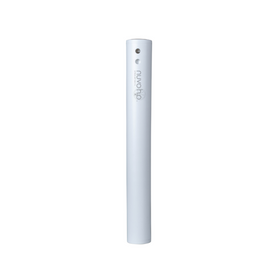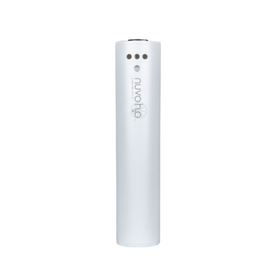
California Home Shows-off the Beauty of Greywater Recycling
Last Updated: Apr 13, 2025With severe water shortages affecting California and much of the western part of the United States, many people have been getting rid of lawns and installing waterless yard designs. While these arid landscapes do have a specific charm and do contribute to decreasing the amount of water our homes (and lawns) use, the thought of a yard without a flower garden, a few fruit trees, and at least a small patch of grass to play on can seem a bit depressing. Might there be a way to irrigate the land around our homes without causing unnecessary strain and waste on the municipal water system?
Almost 60% of the water that we use in our homes is considered greywater, or water that doesn´t contain harmful pathogens from human waste. Greywater, when properly used and designed for, is perfectly suitable for irrigation purposes. According to a recent study done by NASA, about 200 gallons of fresh, potable water is needed per person each day to keep our nation´s lawn surfaces green and healthy. You don´t need to be a rocket scientist to understand that´s not an ideal use of the precious freshwater that we have.
Before ripping up the turfgrass in front of your home and throwing down a bunch of gravel and cacti, a few simple plumbing changes in your home can redirect the greywater from your showers, sinks, and washing machines to irrigate your lawn with water that otherwise would have been washed into the sewer or septic system.
Some Basics of Greywater
Greywater recycling systems can range from complex systems that incorporate pumps and byzantine piping to simple and direct plumbing systems that send your greywater directly to the roots of the plants in your front yard.
The most important thing to take into consideration when developing a greywater recycling system is that you absolutely must make sure that the greywater does not “pool” or stagnate. Greywater that is stored in any place will very quickly grow rancid and develop dangerous pathogens that make it unfit for irrigation purposes and a potential danger to human health.
If, however, you can design for your greywater to move directly from your home to the roots of your plants, fruit trees, flower garden, or lawn, then it will irrigate and even fertilize the plants that receive the greywater. Most household soaps and detergents contain high levels of phosphates that can be beneficial to the healthy growth of plants. If, however, you use bleach or other strong chemical cleaning agents that get washed down your sink, you will need to install a simple filtering system before directing the water to the base of your plants.
One of the easiest and most efficient greywater recycling systems simply requires you to redirect your greywater to one or several fruit trees that you plant in your yard. The “mulched basin” concept simply requires you to dig a small depression around the trees that will be receiving the greywater and fill that indentation with generous amounts of mulch. The greywater will filter through the mulch before being used by the superficial feeding roots of the tree. Planting water-loving fruit trees such as elderberries is a good idea in regions with high levels of rainfall. In arid regions, however, any type of fruit tree is suitable.
For more ideas on how to plan a greywater recycling system that works for your specific context, check out Oasis Design for several design concepts to best use the greywater from your home.
Table of Contents
- An Exotic Grey Water Garden

An Exotic Grey Water Garden
Just outside of Los Angeles, the small town of Eagle Rock, California is directly in the midst of one of the most water-stressed areas in the country. While the greater Los Angeles area routinely publishes water use restrictions that strictly prohibit using municipal water for watering lawns, this home is surrounded by a lush garden that makes you feel like you´re in the middle of a rainforest and not an urban jungle of concrete situated in a desert-like ecosystem.

The home recycles much of its greywater into a unique garden area that combines permeable paths with a diverse array of flowers, herbs, and plants. The heavy mulching around the plants makes sure that greywater infiltrates to the roots of the plants and doesn't pool on the surface. The permeable walkways allow for the little bit of rainwater that does fall in the L.A. area to also filtrate into the ground to be used by the plants while also recharging the underground aquifers.
Water Filtration
Shop water filtration products that have been vetted for your health, wealth, and the planet.

NuvoH2O Home Softener Replacement Cartridge
NuvoH2O
In Stock

NuvoH2O Manor Water Softener System Replacement Cartridge
NuvoH2O
In Stock

NuvoH2O Manor Duo System Cartridge and Filter
NuvoH2O
In Stock

NuvoH2O Home Duo System Replacement Cartridge & Filter
NuvoH2O
In Stock

NuvoH2O Manor Trio System Replacement Cartridges
NuvoH2O
In Stock

NuvoH2O Manor Trio Water Softener and & Multi Filtration System
NuvoH2O
In Stock

Franke Filter Cartridge Chlorine Triflo FRX02
Franke
In Stock

NuvoH2O Home Duo Water Softener + Taste Filter System
NuvoH2O
In Stock

NuvoH2O Manor Duo System Replacement Cartridges
NuvoH2O
In Stock

Franke FRCNSTR Stainless Steel Filtration Canister
Franke
In Stock

The home also contains a supplemental rainwater capture system that gives added moisture to certain plants that have larger water requirements. By simply redirecting the greywater from their showers, sinks, and washing machine to their backyard area, the owners of this home enjoy a lush environment year around while many of their neighbors have nothing but withered grass adorning their homes.
Tobias Roberts
Tobias runs an agroecology farm and a natural building collective in the mountains of El Salvador. He specializes in earthen construction methods and uses permaculture design methods to integrate structures into the sustainability of the landscape.
